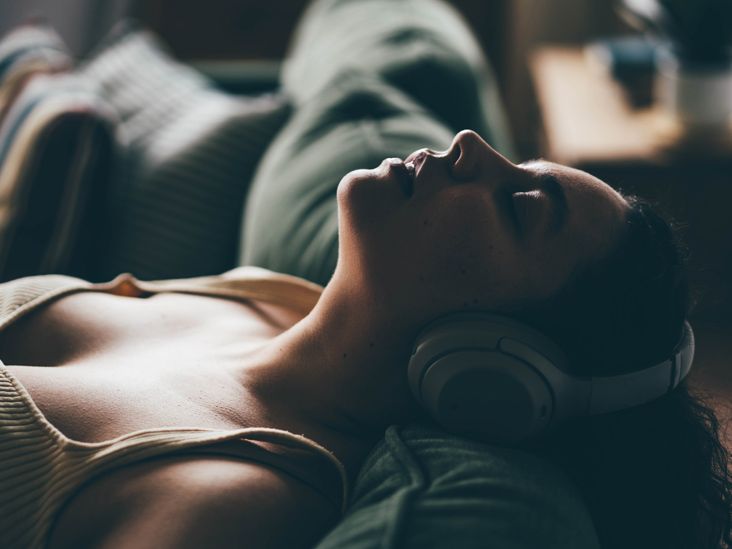
Understanding Ocular Migraine: Does It Affect Both Eyes?
Ocular migraine describes a specific type of migraine characterized by visual disturbances. When these symptoms are noted in one eye, it’s identified as a retinal migraine. Conversely, when both eyes are affected, medical professionals refer to it as a migraine with aura. Although the exact cause remains unclear, it is believed to be related to hyperactive neurons in the cortex of the brain.
What Is Migraine?
Migraine is a neurological disorder that can manifest as intense headaches, along with a variety of accompanying symptoms, including:
- Nausea and vomiting
- Difficulty speaking
- Heightened sensitivity to light and sound
Statistics indicate that approximately 12% of the global population suffers from migraines, and around 30% of these individuals experience migraines with aura—characterized by sensory, motor, or speech symptoms preceding or accompanying the headache.
Visual Changes Associated with Migraine with Aura
The visual disturbances commonly associated with a migraine with aura include:
- Partial vision loss or blind spots
- Zigzag or geometric patterns
- Flashes of light or bright spots
What Causes Visual Aura in Both Eyes?
A migraine with aura can cause distinct visual alterations in both eyes, occurring in approximately 98% to 99% of individuals who experience migraine auras. A 2019 review identified various visual symptoms reported during migraines with aura:
- Bright light flashes: 16% to 38%
- Blurred or foggy vision: 25% to 54%
- Zigzag or jagged lines: 24% to 81%
- Flickering blind spots (scotomas): 23% to 77%
- Blind spots: 32%
- Dark spots: 3% to 17%
- Small bright spots (phosphenes): 19% to 70%
- Flickering light: 12% to 91%
While the exact reason behind these auras is still a topic of research, it is hypothesized to involve a phenomenon known as cortical spreading depression—where a wave of electrical activity spreads across the cerebral cortex, without causing permanent damage to the brain.
Can Ocular Migraine Occur Without Headaches?
Yes, it is possible to experience a visual aura without accompanying headache pain. Researchers estimate that around 4% of individuals with migraines, and approximately 38% of those experiencing migraines with aura, do not have headaches.
Is Migraine with Aura Serious?
Migraine with visual aura can lead to debilitating symptoms that significantly impact daily life for some individuals. Although migraines often resolve on their own and are not typically life-threatening, they can induce serious complications in rare cases, such as increased risk of seizures, heart attacks, or strokes.
When to Seek Medical Attention
If you notice frequent or severe migraine symptoms, it's advisable to consult a healthcare professional. Frequent migraines are generally defined as having more than five episodes monthly, even if managed effectively with medication.
Emergency Situations
It's critical to seek immediate medical help if you or someone you know exhibits symptoms such as:
- Weakness or paralysis in one or both arms or one side of the face
- Slurred speech
- A sudden, intense headache
- A headache accompanied by:
- High fever
- Confusion
- Stiff neck
- Seizures
- Double vision
- Rash
Managing Ocular Migraine Symptoms
Many individuals find relief by resting in a dark environment when experiencing an aura. Applying a cold compress to the forehead or back of the neck may also help alleviate discomfort. When symptoms first appear, the following medications may provide relief:
- Over-the-counter pain relievers like ibuprofen
- Triptans
- Anti-nausea medications
- Ergotamines
Preventing Ocular Migraines
Migraine Prevention Strategies
Various medications can help lessen the frequency of migraine occurrences. It may take some experimentation to determine the right combination that works for you, including:
- Antidepressants
- Blood pressure medications such as beta-blockers
- Anticonvulsants
- CGRP antagonists
- Calcium channel blockers
Identifying Triggers
While the precise causes of visual auras are not well established, various triggers have been identified. Keeping a migraine diary can help pinpoint your specific triggers by tracking factors such as:
- Dietary habits
- Physical activity
- Weather conditions
- Emotional well-being
- New medications
- General health
Lifestyle Modifications
Implementing certain lifestyle changes may reduce the occurrence of migraines, especially if these are associated with known triggers:
- Managing stress
- Enhancing sleep quality
- Avoiding skipped meals
- Reducing exposure to bright lights and loud noises
- Lessen caffeine and alcohol consumption
- Staying hydrated and avoiding specific foods, like:
- Chocolate
- Cheese
- Processed fried foods
What Causes Retinal Migraine?
Retinal migraines lead to temporary visual disturbances or loss in one eye, typically lasting 10 to 20 minutes. Although a headache might accompany these episodes, not all individuals experience head pain. Factors that could trigger a retinal migraine include:
- Stress
- Low blood sugar
- Dehydration
Treatment for retinal migraines usually involves pain relievers and minimizing exposure to triggers. While permanent loss of vision is uncommon, seek urgent medical attention if you experience sudden vision loss.
Conclusion
While the term "ocular migraine" is frequently used to describe any migraine associated with visual symptoms, it’s vital to differentiate between retinal migraines and those with aura affecting both eyes. Nearly a third of individuals with migraines report experiencing auras, often accompanied by temporary vision changes. Although there is currently no definitive cure for migraines with aura, a tailored management plan with the help of a healthcare provider can significantly aid in reducing the frequency and intensity of episodes.
Reading Can You Have Ocular Migraine in Both Eyes?
